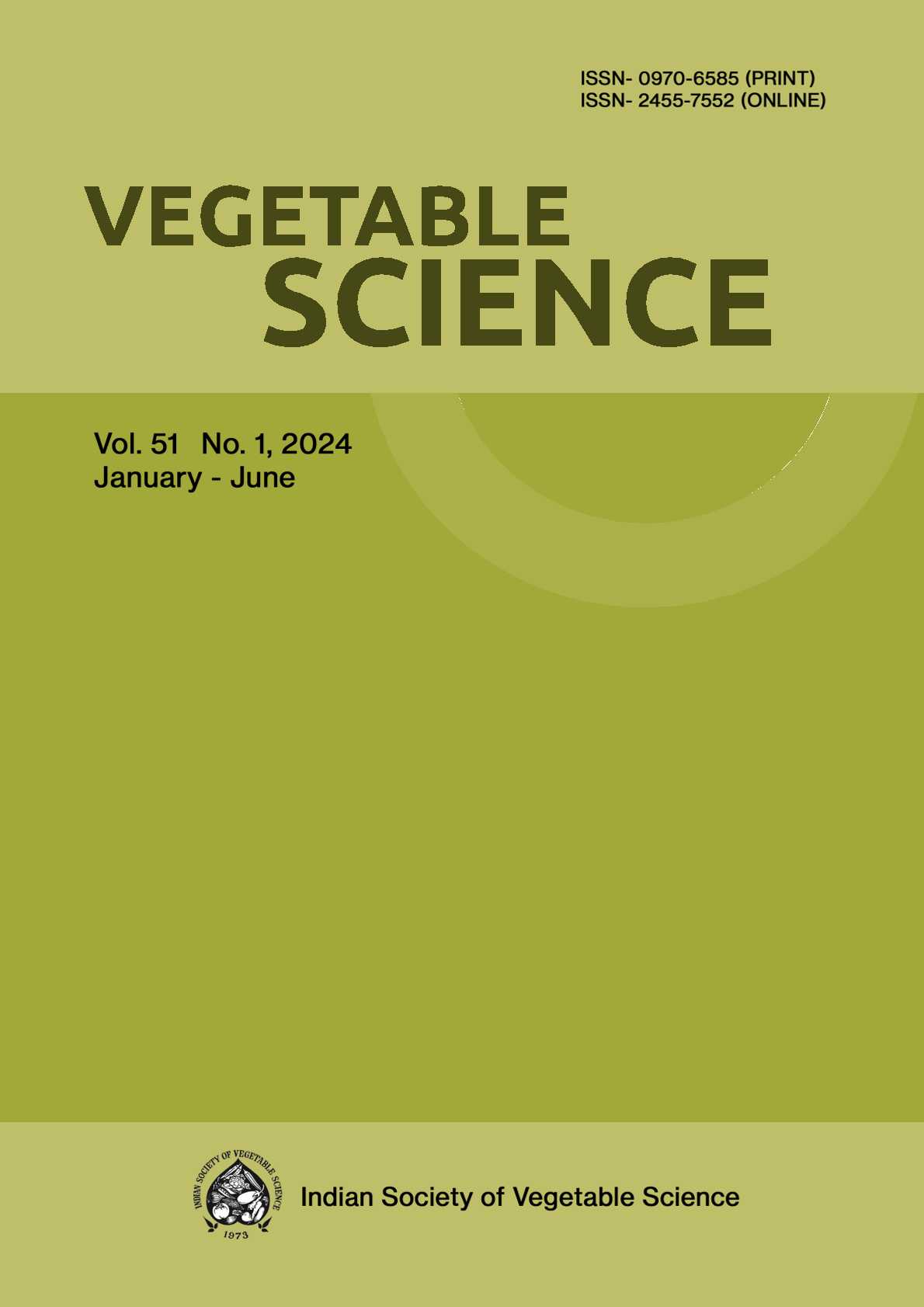Genetic divergence studies using multivariate analysis in bitter gourd (Momordica charantia L.)
DOI:
https://doi.org/10.61180/vegsci.2024.v51.i2.11Keywords:
Bitter gourd, Genetic diversity, Clusters, Euclidean distance, D2 analysis, Principal component analysisAbstract
The genetic divergence of 70 bitter gourd genotypes was studied for eight different morpho horticultural traits by adopting the Mahalanobis D2 statistics (SAS software program) using Tocher’s method. The genotypes were divided into seven clusters using squared Euclidean distance. The results revealed the presence of considerable genetic diversity. The first three principal components contributed 79.20% and 76.50% of total variability during the summer season and kharif season, respectively. The clustering pattern of genotypes revealed that genetic diversity was independent of geographical diversity. In summer, among the 7 clusters, the maximum number of genotypes were found in cluster IV, while it was cluster I for kharif. Among the eight quantitative characters studied, fruit width contributed a maximum of 17.75% genetic divergence, followed by 1st female flower emergence on a node in the summer, while for kharif, 1st female node constituted a maximum of 17.95% contribution to the divergence, followed by fruit width. Together, PC1’s eigenvalue of 3.84, PC2’s eigenvalue of 1.27, and PC3’s eigenvalue of 1.22 account for 48, 16, and 15.3% of the total variability, respectively, in the summer season. The ranking of genotypes based on intra-cluster mean performance for these characters, which are major contributors to genetic diversity, revealed its usefulness as a means of selecting parents for heterosis breeding. Genotypes VRBTG-29, VRBTG-47, VRBTG-10, VRBTG- 31, VRBTG- 47-3 and VRBTG- 28 stood out for earliness, number of fruits/plant and total yield and were found to be more diverse for important horticultural traits. The maximum inter-cluster distance was observed between clusters VI and VII during the summer season and between clusters VII and cluster II during kharif season. The intra-cluster distance was maximum for cluster VI and cluster VIII during the summer and kharif seasons, respectively. Selecting genotypes from the clusters having high inter-cluster distance for crossing gives better transgressive segregants.
Downloads
Published
Issue
Section
License
Copyright (c) 2024 D.R. Bhardwaj, Juhi Pandey, Aman Singh, Sandeep Kumar, Keshav Gautam (Author)

This work is licensed under a Creative Commons Attribution-NonCommercial-NoDerivatives 4.0 International License.






